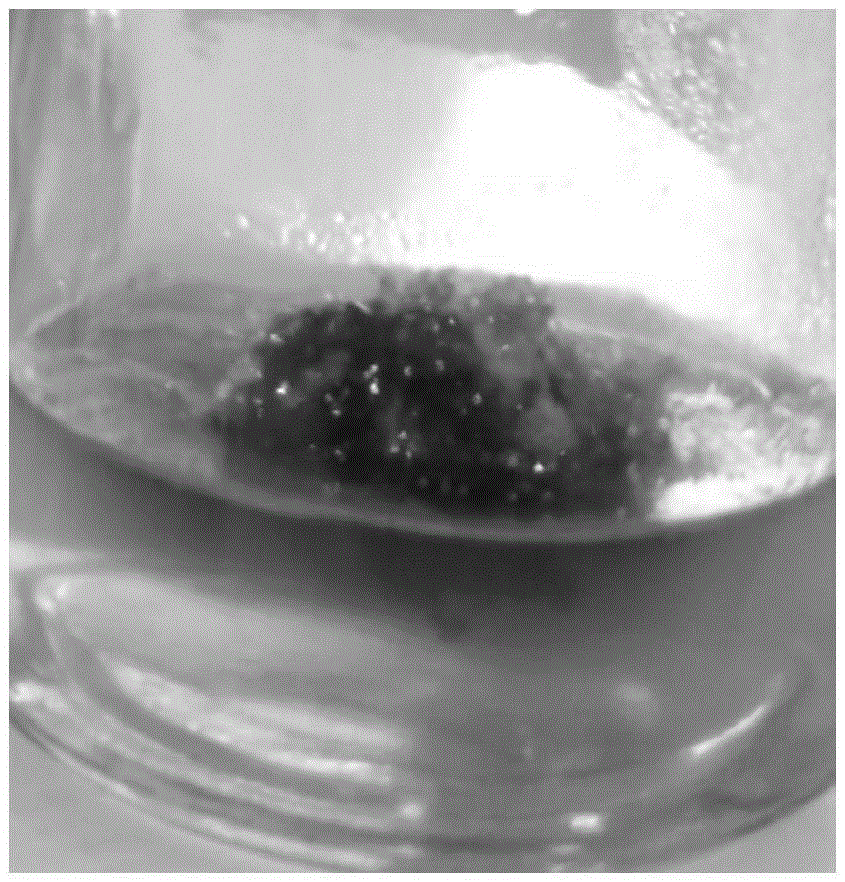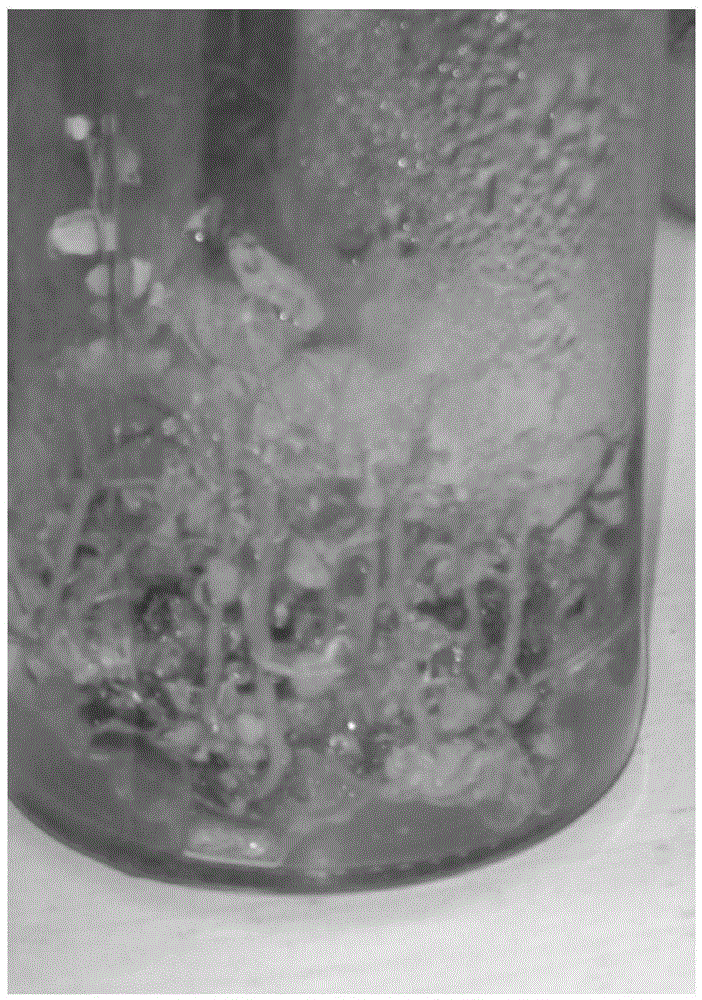Fen Fangji's Seed Tissue Culture Propagation Method
A technology of powder control and seed group, applied in the field of tissue culture, can solve the problems of low reproductive germination rate, low survival rate, long production cycle, etc., and achieve the effects of stable genetic traits, simple culture process, and shortened germination time.
- Summary
- Abstract
- Description
- Claims
- Application Information
AI Technical Summary
Problems solved by technology
Method used
Image
Examples
Embodiment Construction
[0026] The seed tissue culture propagation method of Fenfangji in this embodiment includes six major steps of seed storage, seed disinfection, starting cultivation, induction cultivation, proliferation cultivation and rooting cultivation,
[0027] Seed storage refers to: collect the mature seeds after the fall of that year, mix the seeds with wet sand with a moisture content of 40%-50%, the mixing volume ratio is 1:3, and store them in a refrigerator at 4°C after mixing for 2 more than a week.
[0028] Seed disinfection refers to: take out the stored seeds, wash them in running water for 30 minutes, treat them with 75% alcohol by volume in an ultra-clean workbench for 30 seconds, wash them with sterile water for 3 times, and then put them in 0.1% HgCl 2 Treat in medium for 5-10 minutes, rinse with sterile water for 4-6 times, and then place on sterile filter paper to absorb the water.
[0029] Start-up culture refers to: inoculate the sterilized seeds on the MS medium, and ca...
PUM
 Login to View More
Login to View More Abstract
Description
Claims
Application Information
 Login to View More
Login to View More - R&D
- Intellectual Property
- Life Sciences
- Materials
- Tech Scout
- Unparalleled Data Quality
- Higher Quality Content
- 60% Fewer Hallucinations
Browse by: Latest US Patents, China's latest patents, Technical Efficacy Thesaurus, Application Domain, Technology Topic, Popular Technical Reports.
© 2025 PatSnap. All rights reserved.Legal|Privacy policy|Modern Slavery Act Transparency Statement|Sitemap|About US| Contact US: help@patsnap.com



